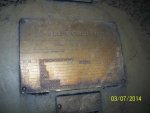In the old Allis-Chalmers motors, type AZ meant Air Tube cooled (TEAAC), in other words you pumped air through the built-in motor air-to-air heat exchanger with an external blower. The Type CZ is TEFC, so the motor is driving it's own fan. That will degrease the efficiency between the two on the motor nameplate, but on the AZ, you must provide the air through the tubes and keep it cool, and that means energy too. If you are putting the motor in the air stream anyway, such as a boiler FD fan, then the air flow was "free", you just ducted a portion of it through the air tubes on the motor and on into the boiler, where the motor heat was in essence used anyway. If you are NOT using that AZ motor as an FD fan, then you must add the external blower power to your energy use.



